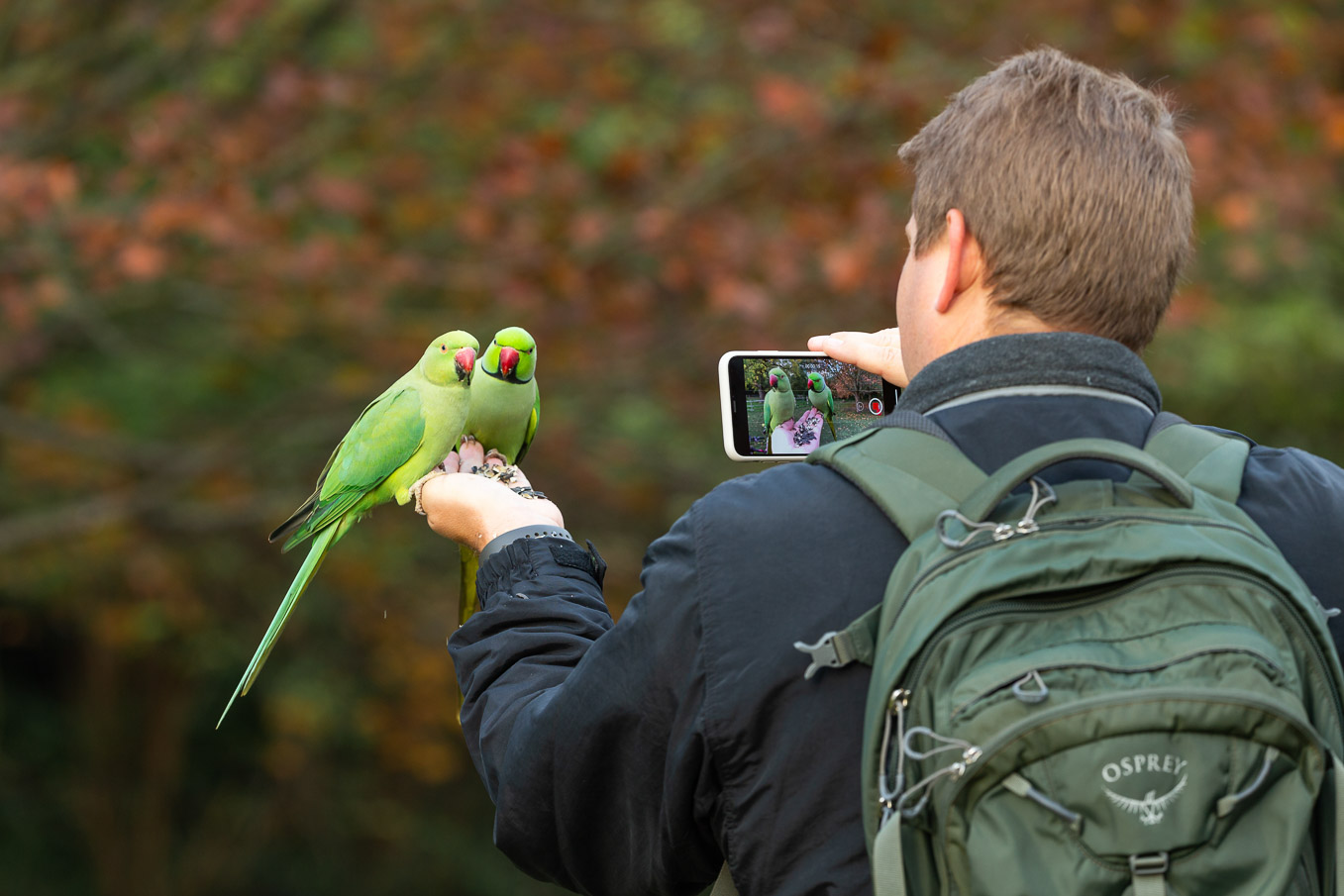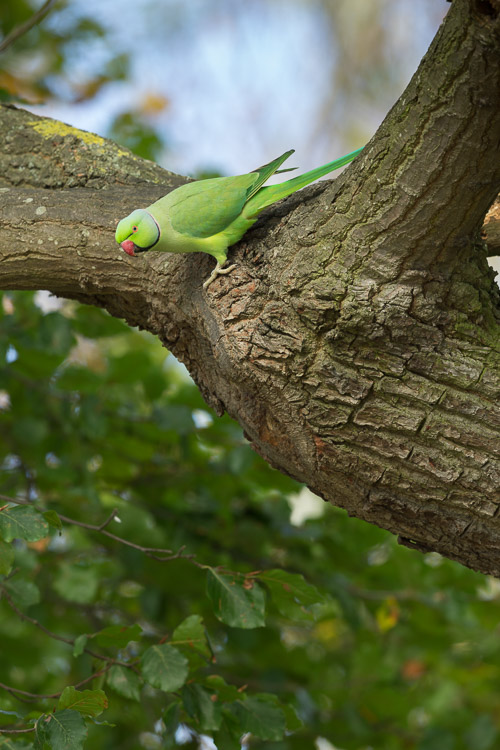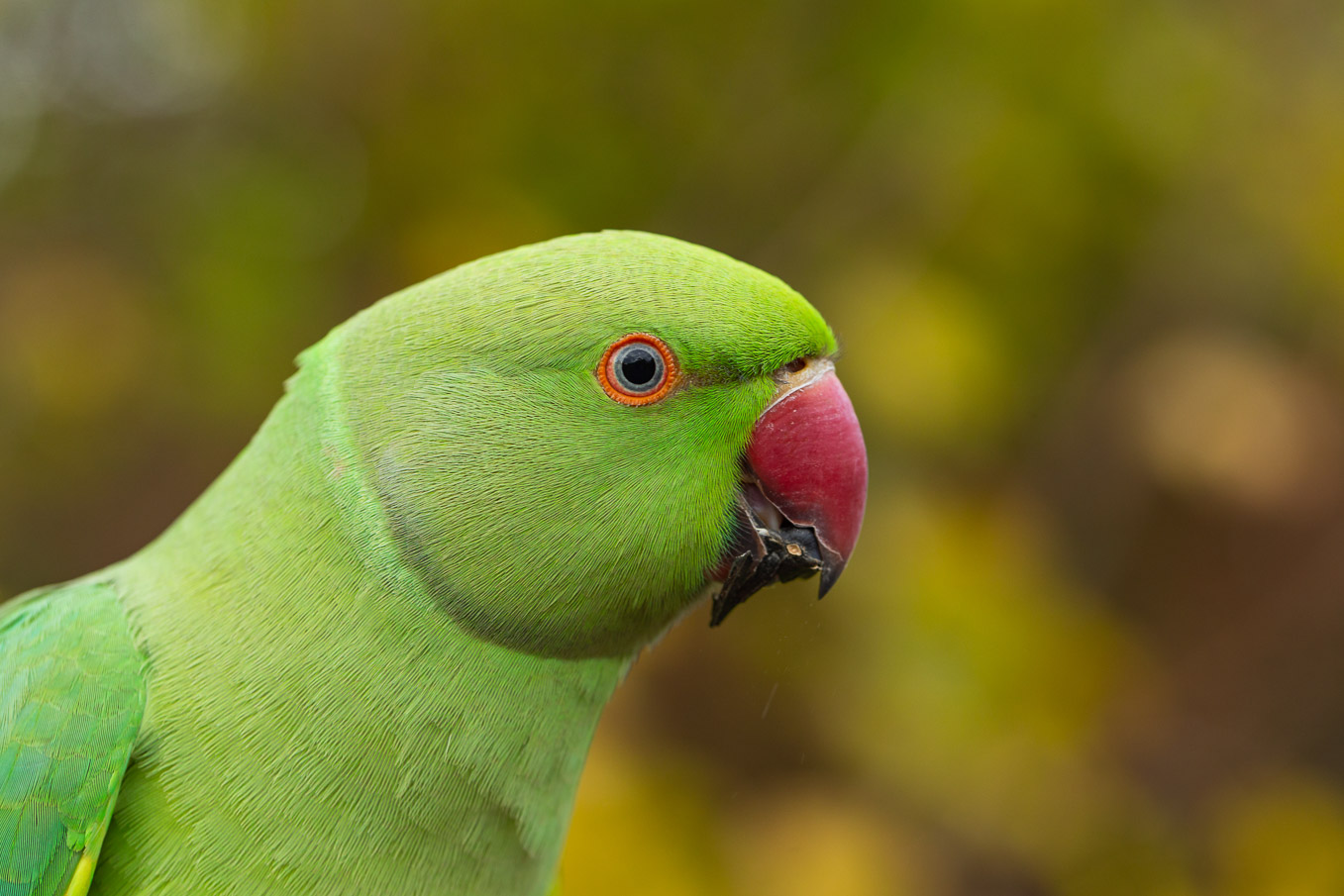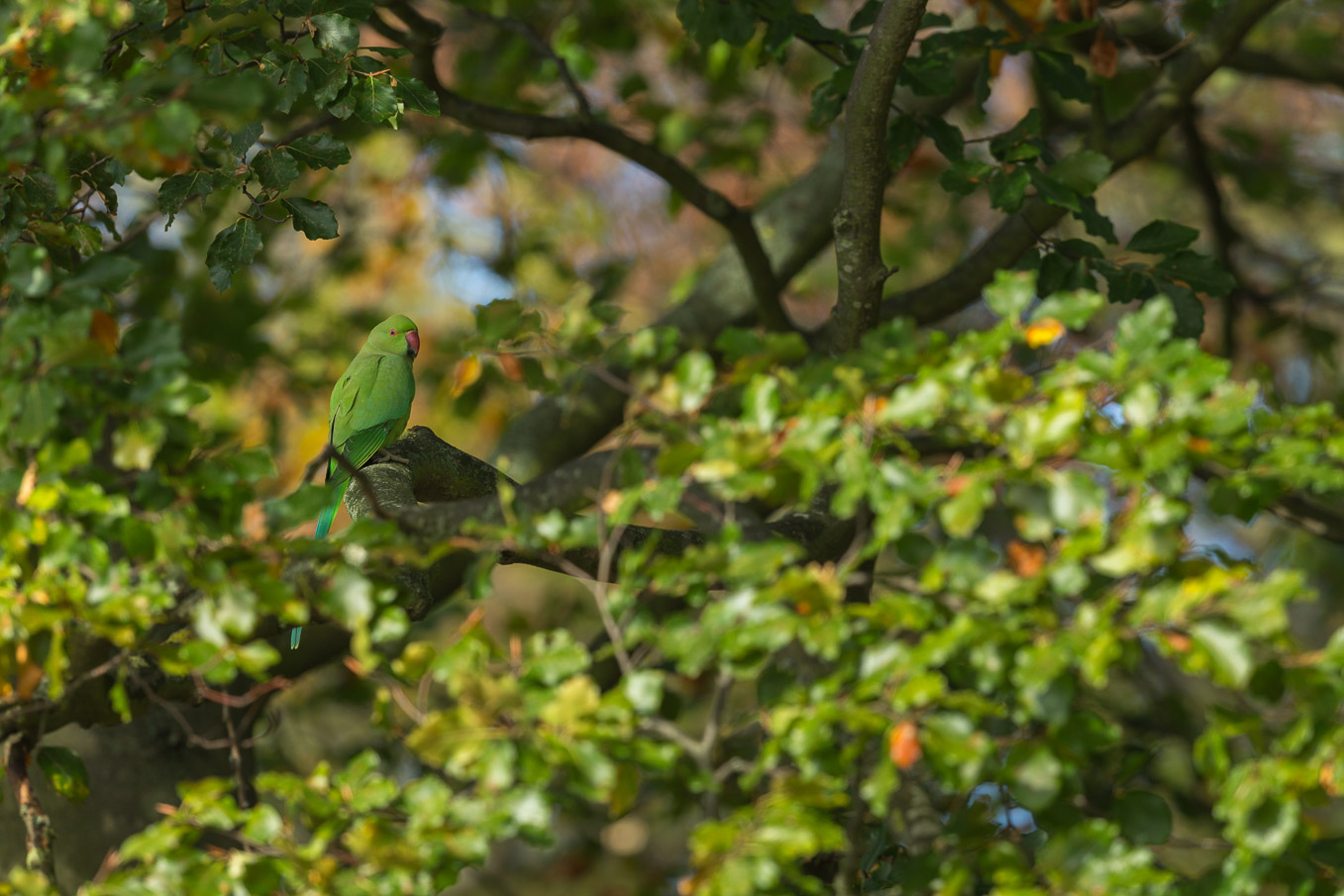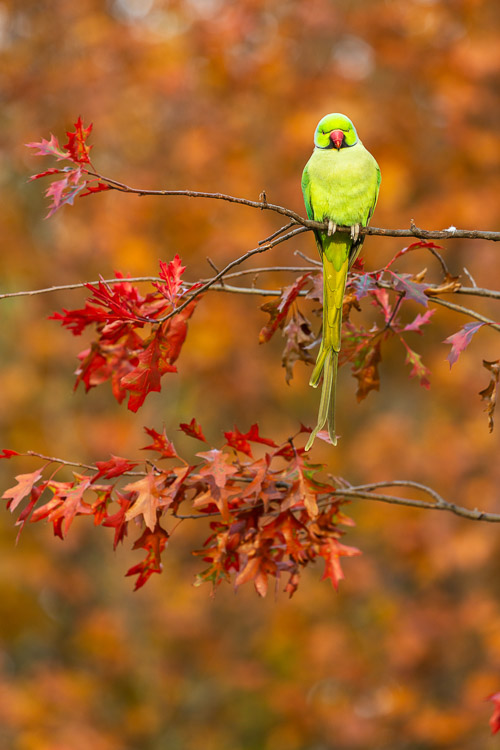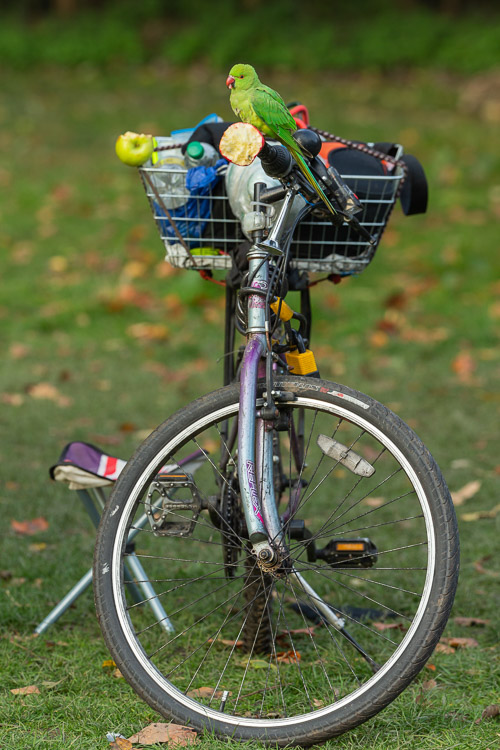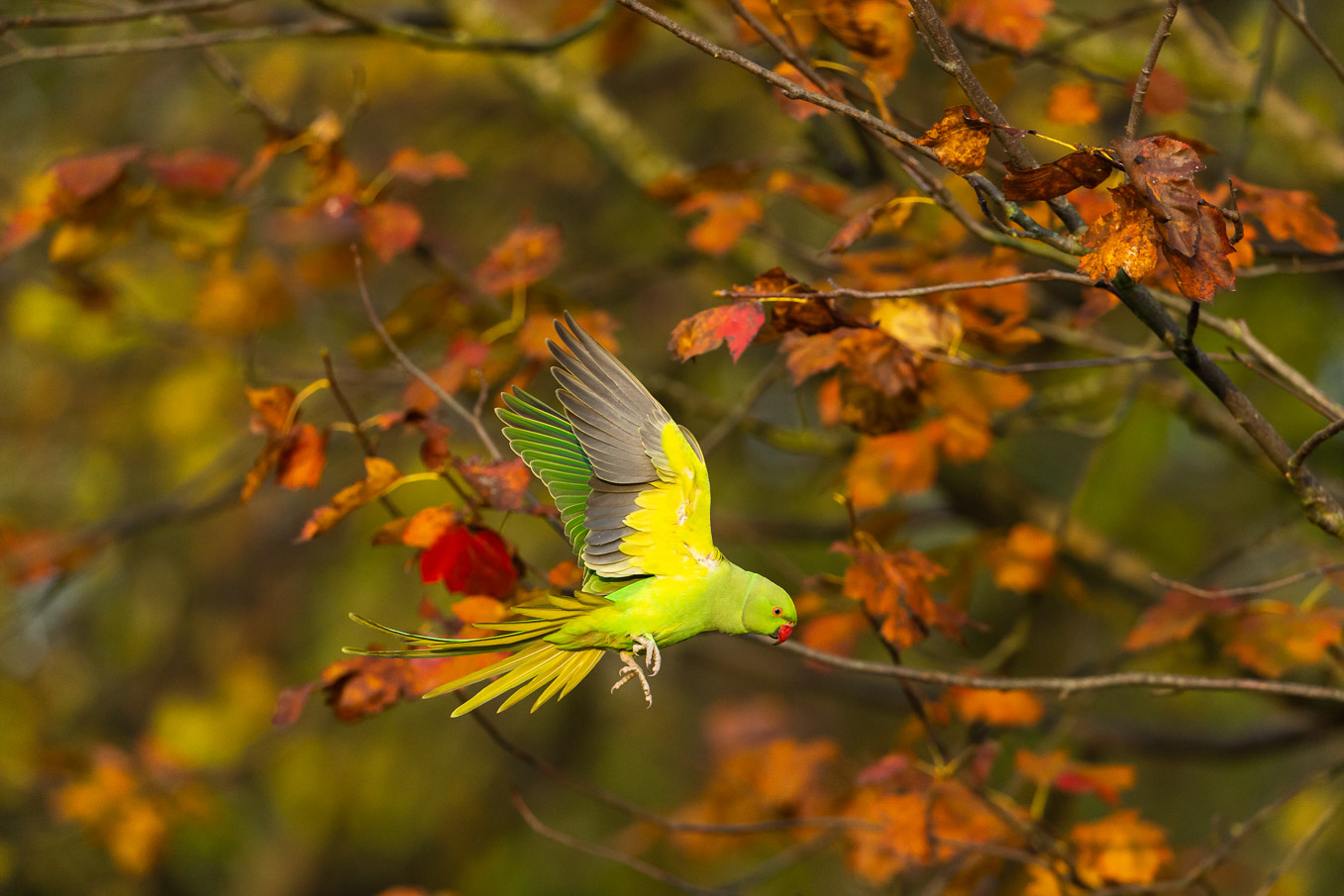
Invasion of the Exotic; the Ring-necked Parakeet
Colourful, gregarious and highly photogenic; what is there not to love about Ring-necked Parakeets?
Boisterous, noisy and alien, there is a lot to argue against this introduced species from Asia and southern Africa. However, there is nothing quite as rewarding as having them feeding out of your hand. And along with being bright and colourful they are a photographer’s dream!
As London is the hub for Ring-necked Parakeets I shall keep the article focussed on some of the great locations here to see and photograph them, however they are beginning to spread and have been recorded as far north as Scotland and into Wales and the west-country.
London has a number of fantastic parks where parakeets can be found and as well as the London Wetland Centre (Wildlife & Wetlands Trust), Richmond Park, Bushy Park and Hyde Park are all places where I’ve photographed them. Kew Gardens and much of Greater London have them, so it would not take too long to find a suitable breeding colony to photograph.
Hyde Park appears to be very popular for them and they come easily to food. It seems that people also flock here too, to get their hands full of these delightfully non-aggressive birds.
I’ve been fortunate enough to photograph them in a number of locations but usually as a side product of working with another species. I have also seen them a number of times in their native Indian subcontinent where they are perhaps not as prolific as they are here, the British breeding population now exceeding 12,000 pairs. They do appear to out-compete other native species for nesting sites so it’ll be interesting to watch their progress.
It would seem our overall mild climate is perfect for them and our British birds are the most northerly breeding parrots in the World. Another great reason for their significant rise in number is their broad range of food choices and their ability to occupy any medium woodpecker size nest hole. They will feed on a variety of fruits, seeds, flowers as well as becoming increasing common at garden bird tables. And particularly in the case of some London parks, out of the hands of the human visitors!
Male and female parakeets are sexually dimorphic so the adults can be told apart. Males are generally slightly larger but also have the distinctive pink ring around the neck hence their alternative name Rose-ringed Parakeet.
When it comes to breeding only the female incubates the brood and both parents then feed the chicks. Fledging usually takes place before 50 days and as long-lived birds they may reach eight years old.
Once you’ve located a suitable location it’s then a simple matter for watching and observing their behaviour. I’m still yet to work on my flying images although a few take-off and landing shots are in the bag. Like with any species building a portfolio of work is the most satisfying and rewarding component. It allows for writing articles if nothing else! But there are always plenty more sub-projects to complete and I’ll always return for more with a new idea or different approach to the species.
Parakeets offer great camouflage too so it can be a challenge locating them even though they’re sitting close-by in a tree. Their squawking call is highly distinctive and can be heard all over London. It’s just a case of getting your eye in. This then allows for great compositional images of birds big or small in the frame and working with the best light at dawn and dusk to really show-off their bright colours.
As the species is generally very confiding you can be creative with your photography. Take a variety of lenses with you or at least one that has a zoom option so you can take both close-ups and a wider angle showing them in context to their habitat. When in the hand I actually used a 100mm macro lens too as this produces very sharp images and lots of stunning detail from the birds’ plumage.
creative props for bird of prey workshops
With most of my parakeet photography, I’ve used an aperture of between f/5.6 and f/8 as this suits the size of the subject and amount of detail I require. It also keeps a decent speed as the birds can be quite mobile with their bill and head moving a lot when feeding.
For one of my favourite shots I reduced my aperture to f/4.5 to allow a corresponding speed of 1/3200 second, which was enough to freeze birds taking off. There was a small group perched in a tree and as another human feeding station rocked up they gradually departed one by one to get a free meal.
Further reading:
To see more of Oliver’s images or for more information about his work including how to connect with him for talks or workshops check out his website at www.smartimages.co.uk
